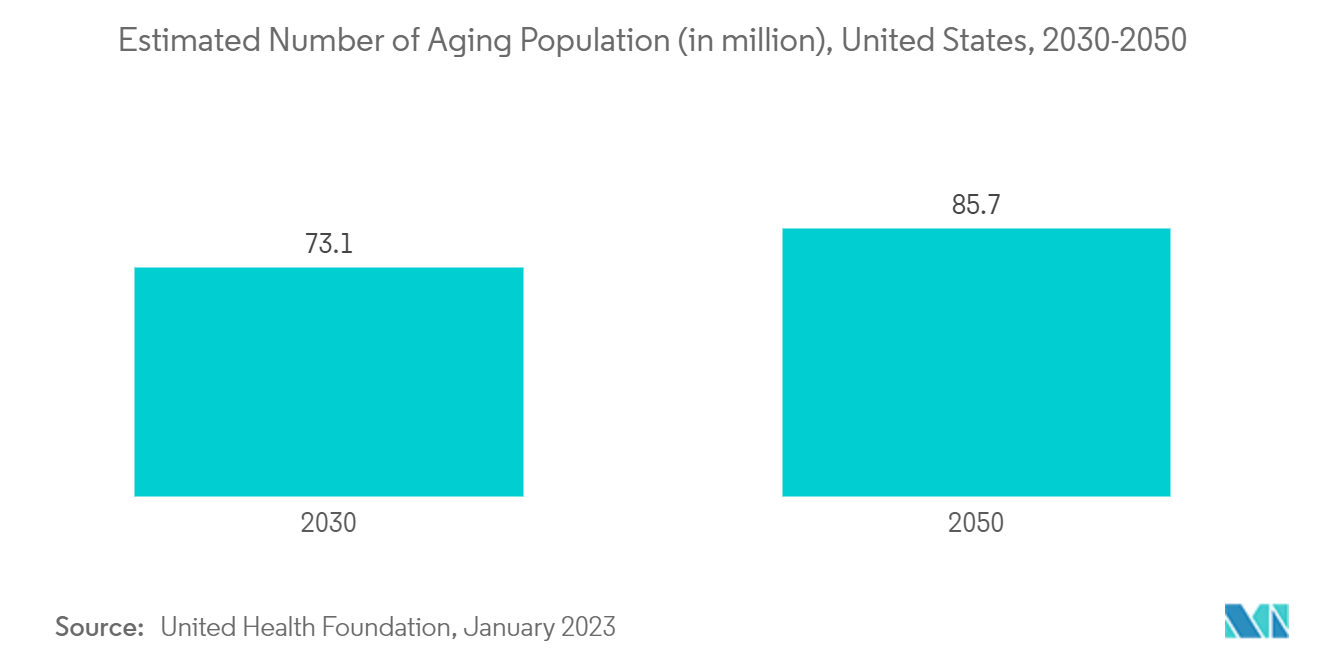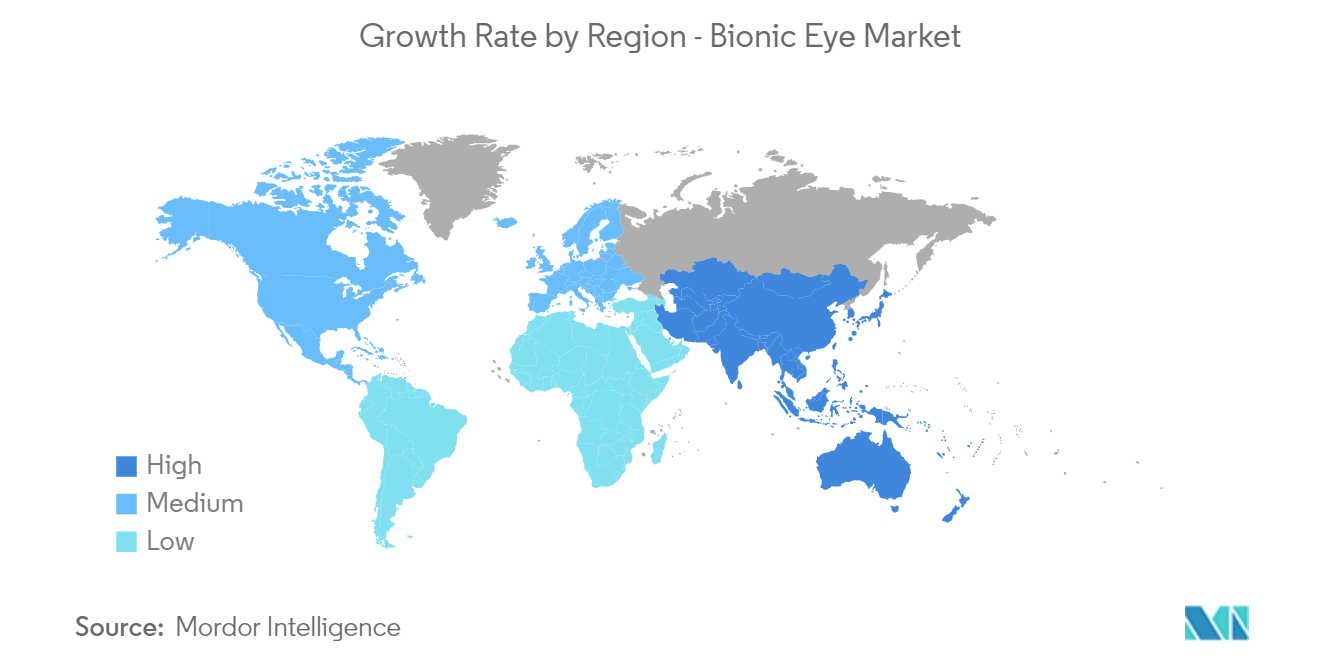Market Trends of Bionic Eyes Industry
Implanted Eye Segment is Predicted to Grow Significantly Over the Forecast Period
The implanted eye segment is growing due to increasing research and development and is expected to witness considerable growth during the analysis period. Research is going on for the innovation and development of implanted eyes, and researchers are intended to develop novel ways to bring vision restoration to patient care, and bionic eye implants are one such innovation. Thus, owing to increasing research and associated benefits, the segment is anticipated to grow during the forecast period.
Implanted bionic eyes replace natural eyes using various types of technology, depending on the specific eye or prototype. Argus II Retinal Prosthesis System is commercially available in the United States and is the world's first FDA-approved prosthetic retina implant. This stimulates the inner retina with electrical signals from a camera and a computer which further provides the vision to patients with severe vision loss from retinal degeneration. It is the first and only commercially approved implant in Europe, the United States, and others. It has an epiretinal microelectrode array that is surgically implanted on the retinal surface and restores the vision of the patient. Such innovative products in the segment are anticipated to fuel the segment's growth during the analysis period.
Furthermore, growing funding activities in the segment are expected to drive the segment's growth over the analysis period. For instance, in October 2022, Biomedical researcher Michael Beyeler, an assistant professor of computer science and psychological and brain sciences at UC Santa Barbara, received USD 1.5 million as NIH Director's New Innovator award to enable a smart bionic eye and investigate the difficulties faced by implanted bionic eyes, which convert the light collected by a head-mounted camera into electrical pulses and send them through a microelectrode array implanted in the eye or the visual cortex. Such investments are anticipated to fuel the mart's growth over the analysis period.

North America is Anticipated to Hold a Significant Share of the Studied Market
North America is expected to hold a major market share, owing to the high prevalence of various chronic diseases such as cancer among women, rising incidence of lifestyle-related disorders, high adoption of technologically advanced products, product launches, and government initiatives.
The aging population most commonly gets affected by vision loss and dry age-related macular degeneration (dry AMD), which increases the adoption of bionic eye use among older people, which helps in vision restoration. Hence, with the increasing older population in the country, the demand for photochromic lenses is increasing.
For instance, according to the data updated by the United Health Foundation in January 2023, the total number of adults ages 65 and older is projected to rise to an estimated 73.1 million by 2030 and 85.7 million by 2050 in the United States. As the number of older people is projected to reach, the demand for bionic eye implants is predicted to increase in the country, further creating opportunities for the market growth of the bionic eye in the United States.
Furthermore, diabetic retinopathy (DR) is one of the major causes of concern among people with diabetes, which most often causes sudden vision loss. Hence, with rising concerns about DR in the United States, the associated vision loss is increasing and is expected to drive the demand for bionic eyes. For instance, according to data released by Jobson Healthcare Information LLC in June 2022, diabetes is one of the major causes of blindness in working-age adults, and nearly 11.7% of adults in the United States with diabetes had vision disability, including blindness in recent years and approximately half of the patients with diabetes are estimated to have DR by 2030 increasing the burden of blindness. Thus, the high-risk population in the country is expected to increase the demand for bionic eyes and fuel the market's growth over the analysis period.


